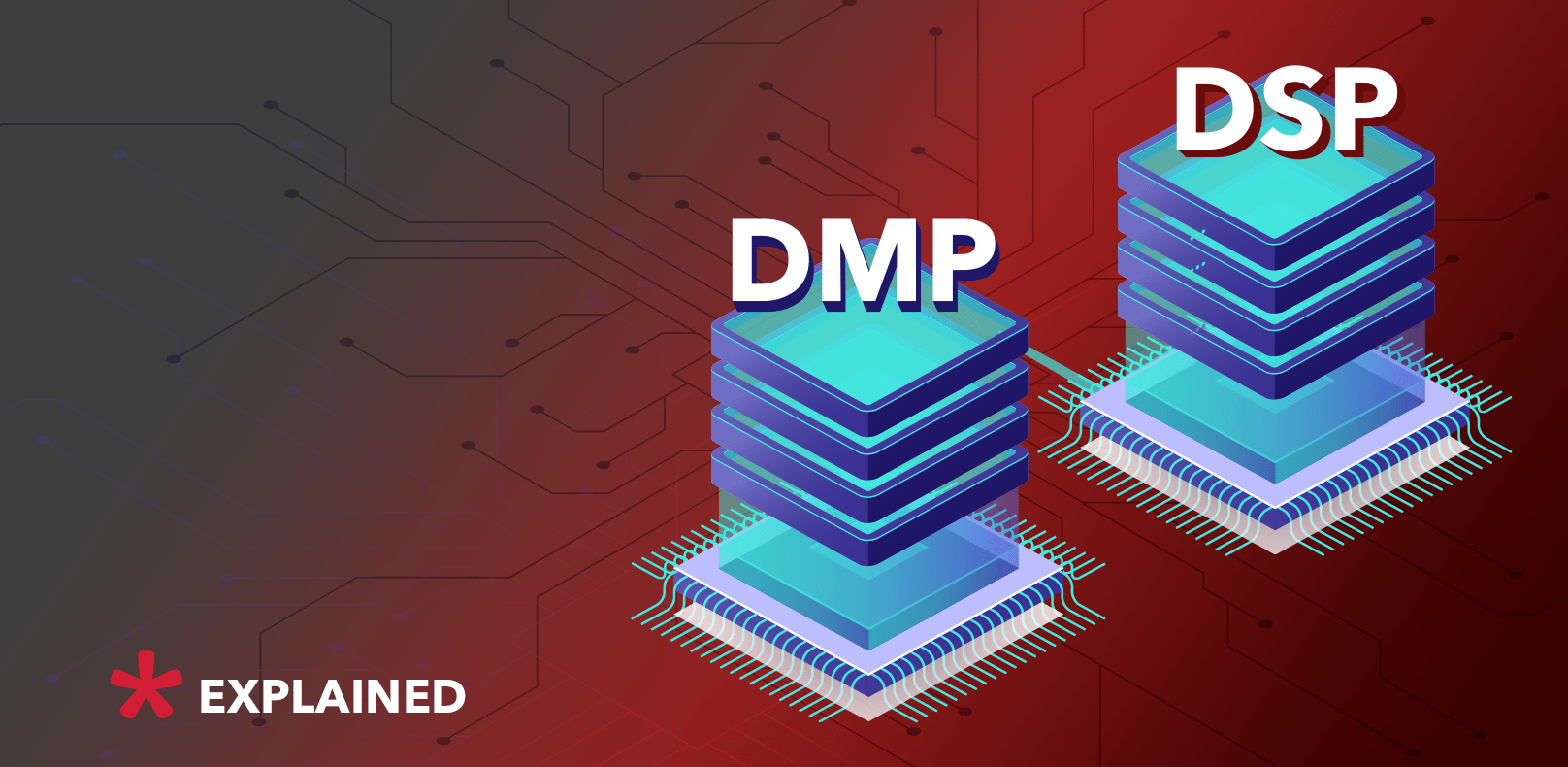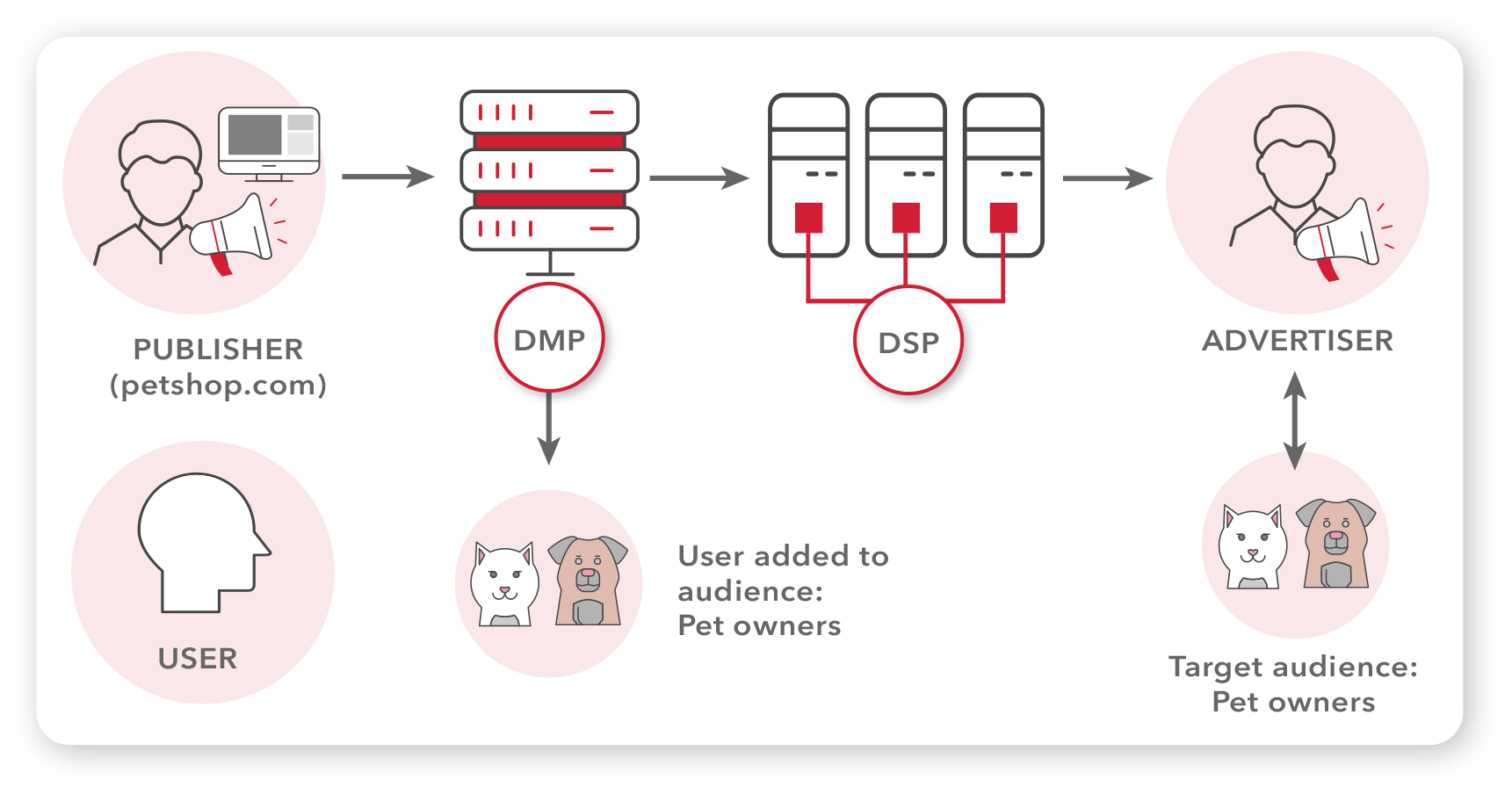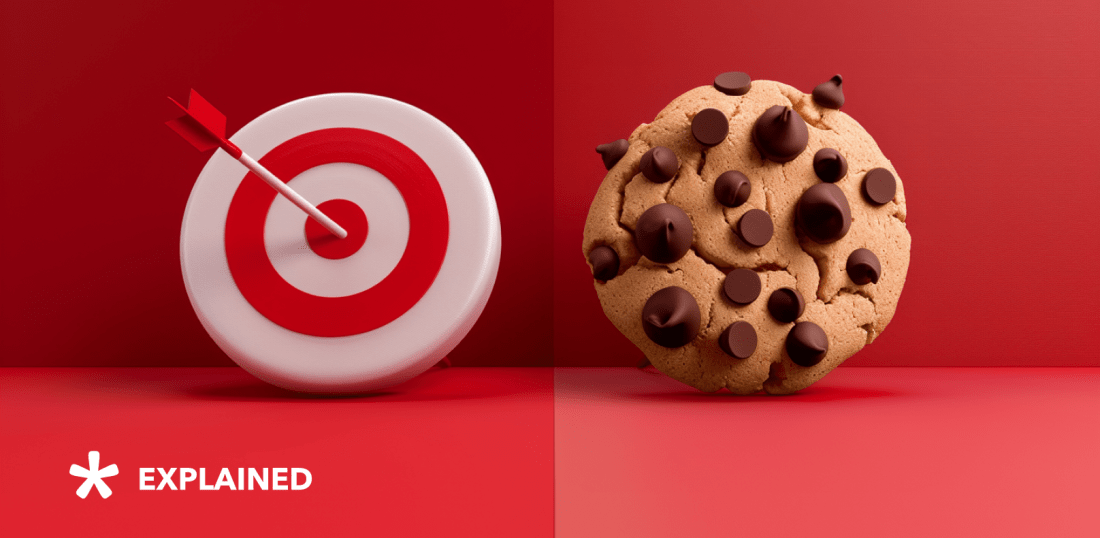
DSP and DMP: Why You Need Both for Effective Ad Targeting
Programmatic media buying is a data-driven industry that heavily relies on technological solutions and software platforms. DSP and DMP are two crucial components of the programmatic ecosystem that match ads with the most relevant audience.
DMP is paramount to data-driven advertising and precise targeting. Not surprisingly, marketers are expected to increase their use of DMP by 64% in 2020.
To get the most out of consumer data, you have to understand how DSP and DMP work together.
- What is DSP?
- What is DMP?
- First-party data
- Second-party data
- Third-party data
- How DSP and DMP work together
- 1. Data organization
- 2. Segmenting
- 3. Audience management
- 4. Campaign reporting
- Mid-flight analysis
- Post-campaign reporting
- Main Differences Between DSP and DMP
- 1. Data Collection
- 2. Data Export
- 3. Versatility
- 4. Audience groups
- 5. Privacy and data safety
- DMP, DSP or DMP/DSP Hybrid: What should you use?
- For publishers
- For advertisers
- Wrap up: How can advertisers benefit?
What is DSP?
A demand-side platform or DSP is software that allows advertisers to buy ad spaces across various digital media channels programmatically. DSP connects advertisers with data providers and supply-side platforms (SSP), which represent publishers.
It enables advertisers to participate in programmatic buying and real-time auctions. A demand-side platform bids on impressions on behalf of the advertiser to get the lowest price for the ad placement.
DSP streamlines the process of ad buying for advertisers and allows them to buy impressions across a number of different sites, mobile apps, podcasts, and digital out of home (DOOH) media. It removes redundant negotiations and automatically decides which impressions are worthy of buying.
DSP targets specific users based on their behaviors and preferences. Depending on the provider, DSP can provide targeting options based on geolocation, type of device, browser, domain URL, and the traffic category.
DSP is a comprehensive tool for campaign management. It allows advertisers to receive timely reports on the impact of their ads, cap frequency of ad showings, and adjust creatives in real time.
What is DMP?
A data management platform or DMP is software that extracts, collects, manages, and analyzes data. As you might hear, data is the new oil, and your success in the digital landscape is predicated on how well you can use it. DMP is the depository for data gathered from different channels and platforms.
One of the DMP functions is to scan cookie IDs and package them into segments in accordance with their location, demographics, and behavior. DMPs divide audience data into clusters and give recommendations on targeting, messaging, and primary channels of communications. DMP can also create lookalike audiences, analyze the average client profile, and suggest viewers with similar characteristics. In addition, DMP allows you to consolidate 1st, 2nd, and 3rd-party data.
First-party data
First-party data is the information that publishers and brands collect themselves. It is data about their consumer base or audience. First-party data is very reliable since it is gathered from the primary source:
- CRM
- Website
- Social media
- Email lists
- Sign-ups for the events, etc.
There’s a great case study on our blog, showing how all advertising market players can benefit from 1st-party data.
Second-party data
Second-party data is somebody else’s first-party data, which is obtained directly from the source. 2nd party data is usually gathered through partnerships and data-sharing agreements. DMP enables sharing of the second-party data with designated parties.
Third-party data
Third-party data comes from outside sources, that are not original collectors of data. Those are a large reseller that draws data from various publishers and sources. Companies like Nielsen and DataLogic can provide massive data sets of demographic and behavioral information that complement first-party data and allow DMP to create lookalike audiences.
NOTE: Google announced that by 2022 it would terminate the third party cookies in Chrome, disrupting the existing models of gathering third-party data.
How DSP and DMP work together

DMP consolidates audience data and passes it to the DSP, which connects to ad exchanges and SSP to find the most relevant ad placement.
Without DMP integration, DSP can set very limited targeted parameters. The demand-side platform can collect data only from marketing campaigns and have a limited data set to reach out to wider audiences.
DMP can collect robust first-party data from various sources and provide additional data that let advertisers perform an extended audience targeting.
Read Simpals case study to learn how the company increased monetization capabilities of their resources and added new revenue sources by using Admixer.DMP and Admixer.Network.
1. Data organization
Once DMP has collected the first-party data, it centralizes the information from different platforms and sources. When data is consolidated in one place, it is easier to extract insights on the lifetime value of the customers, content that engages them the most, and best ways to reach them.
Then, it subdivides this data into hierarchies based on the specific use cases. Agencies and large advertisers can build hierarchies for different campaigns and various clients. These data won’t mix up but will allow having a holistic view of the data environment.
2. Segmenting
DMP organize customers into segments and can set up custom audiences. When the data is organized into segments, it is easily manageable for marketing campaigns.
By using distinctly defined user segments, advertisers can deliver different campaigns for each group of customers: pick a different creative, device, and time of delivery for each segment.
For instance, if you are advertising beer, you can target sports fans with a sport-related pre-roll on the desktop or CTV a couple of hours before the important game. Meanwhile, you can reach the general public with a more generic ad while they are on the phone in the supermarket.
DMP can use second- and third-party data to profile users and narrow down their preferences, affinities, most used devices, and media during different parts of the day. This software allows advertisers to tailor their content strategy to various segments of the audience, receive more impact from the ads, and attract more narrow-niche traffic.
3. Audience management
After the data is organized into segments and hierarchies, advertisers can take separate clusters of their audience and analyze them in-depth. DMP can discern patterns in customers’ mindset, their intents, and the consumer decision journey.
It allows advertisers to map out different stages of decision making and reinforce them with retargeting or native ads.
For example, you work in eCommerce and have a high cart abandonment rate. Your DSP cannot provide enough data to interpret this behavior. Thus, you open your DMP and pull additional data from other sources and determine that your users go to a price comparison website and choose to buy the product from the cheaper vendor. Based on this data, you can launch a retargeting campaign to emphasize your superior service and customer satisfaction or choose to target a more high-end segment.
Rich data and analytics from DMP enable marketers to deliver highly personalized messages, customize them for particular audiences and achieve a higher level of engagement.
4. Campaign reporting
DMP enhances media planning and content strategies, by tracing demographic and behavioral nuances of the targeted audience. DMP can enrich audience data from DSP with the following parameters:
- Demographics: country and region, gender, age, income, and educational level.
- Online habits: types of content that user consumes across different spheres. These include movie preferences, magazine subscriptions, political party affiliations, favorite literature, and music.
- Frequent user path: a pattern of how and why the user usually visits a website, which helps to identify cross-sell opportunities and interest overlaps.
Mid-flight analysis
DMP not only helps to set up campaigns but also can help to control its progress and provide mid-flight analysis. Advanced analytics of DMP can outline which audiences are performing better, and should be more aggressively retargeted, and which should be dropped from the communication.
Additionally, DMP can assess the utility of the 3rd party data and determine the best third-party data providers. It can help to optimize campaigns based on real-time reports and performance indicators.
Post-campaign reporting
DMP also produces post-campaign reports that allow marketers to evaluate their strategy, KPIs and pinpoint its flaws and strong points. The report includes all the major campaign metrics, including frequency of ad showing on different platforms, in different regions, and across devices.
It can identify the better-performing groups of users to inform future campaigns and creatives. DMP can distinguish the most engaged users, and those who moved further in the conversion funnel, compile their demographic and behavioral data to build a new audience or find lookalike audiences.
DMP provides a comprehensive interpretation of the post-campaign results and gives suggestions on optimization and future campaign targeting.
Main Differences Between DSP and DMP
1. Data Collection
Since DSP needs to use various data points for targeting and assessing ad inventory performance, it has basic functionality to collect data. However, DSP has capabilities only to gather data from campaigns. In contrast, DMP is a more comprehensive tool that can collect and consolidate data from various DSPs, onboard data from CRMs, email lists, external sources, etc. With tag managers, it can gather data from websites and apps and structure the customer base. While DSP have data tools only for programmatic campaigns, DMP can be used for a variety of tasks that encompass
2. Data Export
DSP is a rather limited instrument since the data it gathers can be used only for the campaigns in the same DSP, unless your DSP has a built-in DMP such as Admixer.DSP. However, it is not the case for most DSP, which needs to plug in additional data management SaaS to export or import the data. A proper DMP has custom integrations or can be seamlessly connected with an API to a variety of ad tech platforms, DSPs, SPS, data exchanges, etc.
3. Versatility
DSP has a distinct objective – support the buy-side of media trading, while DMP serves much more diverse goals. Publishers can also use DMP to build profiles of their audience, personalize the content experience, and gather narrow audience segments of the specific demographics (which are appraised higher on the programmatic market). DMP can be used to activate the publisher’s data in the external system, monetize it on the data exchanges or through other programmatic platforms and vendors. DMP is an instrument that can work with 1st-party and provide access to the marketplace of 2nd-party and 3rd-party data.
4. Audience groups
While you can upload a particular audience group for targeting to your DSP, only DMP has advanced features that can really put to work your data. One of the important perks of the DMP is the ability to craft user segments. For instance, you have an online shop and new iPhones in stock; you need to launch a programmatic campaign targeted at an appropriate audience. With the “Segment Constructor” feature of the DMP, you can create an audience group of Apple lovers, most potent for the new iPhone purchase.
You can use the feature and create an audience group where you would put people who have a record of buying any Apple products in your shop ( by combining audience groups from the previous campaigns that resulted in purchase).
5. Privacy and data safety
Recent years were marked by the growing concerns regarding the safety of personal data. Privacy regulation should inform the provider you choose for your stack and approaches to data management.
There is no one-fits-all solution because there is a difference in privacy regulations in different markets. DMP works mostly with anonymized ids (cookies/maids) and can guarantee proper safety to your user’s data. DSP data policy largely depends on the provider. DSPs can utilize your data sets to increase the efficiency of campaigns from other clients. In Admixer.DSP, you have sole ownership over your 1st party data and can exercise all the necessary oversight to ensure the safety of your clients’ personal data.
DMP, DSP or DMP/DSP Hybrid: What should you use?
The proper tech stack choice depends on your company’s type, size of your business, short-term goals, and long-term objectives.
For publishers
If you are a publisher, you can hardly live without a DMP if you want to get significant revenue from the programmatic marketplace. With the looming depreciation of third party cookies, publishers who cannot establish their users’ identity won’t be able to offer addressable contextualized impressions and get significantly lower CPMs.
From the identity perspective, 1st party DMPs may become the must-have solution for publishers, and advertisers need to learn how to integrate with them.
For advertisers
If you are an advertiser, the choice depends on the scale of the available data. If you are not planning to use advanced features of collecting and analyzing your customer data from different touchpoints with your brands and need a tool purely for media buying, DSP alone will suffice.
If you need granular analysis of your clients’ data and your customer acquisition encompasses different marketing channels and attribution funnels, then DMP is crucial for effective marketing activities. Ideally, DSP and DMP should be a part of the integrated tech stack; this way, they can seamlessly integrate without redundant manual procedures and can quickly automate all your processes. Assembling your tech stack from independent providers can result in the lost data, discrepancies, overspending, reaching your customers with irrelevant and ultimately lost revenues.
Wrap up: How can advertisers benefit?
DSP is an integral part of programmatic buying that allows advertisers to reduce spending by bidding only on the optimal price of the impression. However, DSP can collect data only from marketing campaigns and have minimal targeting options. Without DMP, it can’t get sufficient reach and extract valuable analytics from data.
- DMP lets you effectively process, store, and manage data, the key to performance-driven marketing.
- DMP can structure the brand’s first-party data from various sources and amplify it with second and third-party data.
- The big data algorithms in DMP can find correlations between variables and deliver meaningful, actionable insights.
- DMP can divide campaign audience into segments, deliver customizable messages, and track their impact in real-time.
A DMP should be at the core of data-driven campaigns and determine its strategies and message. It allows you to transition to the fact-based model, where you can measure which content resonates with your audience, which channels reach clients better, and what messages deliver the best conversion rates.
If you are willing to implement DMP or need consultancy, contact Ivan Fedorov, New Business Manager at Admixer: ifedorov@admixer.com



